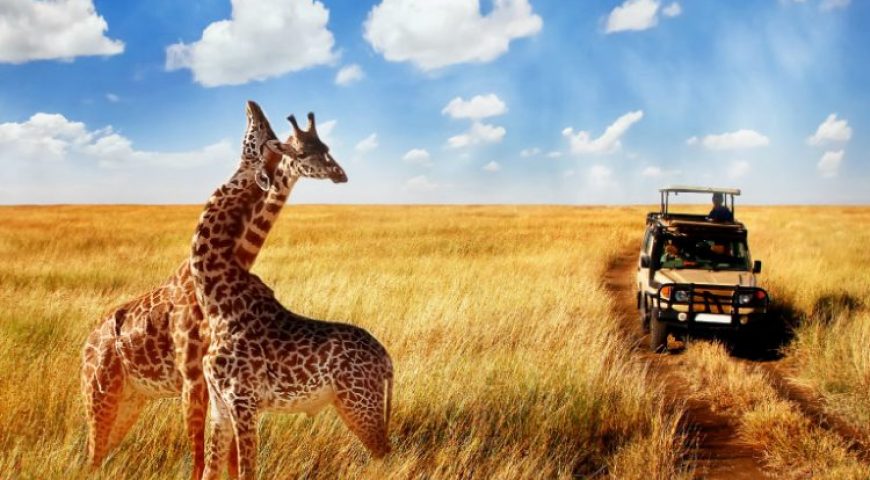
NORTHERN CIRCUIT
Serengeti, Lake Eyasi, Lake Natron, Oldonyo Lengai, Ngorongoro Crater, Tarangire National park, Lake Manyara NP.
Serengeti
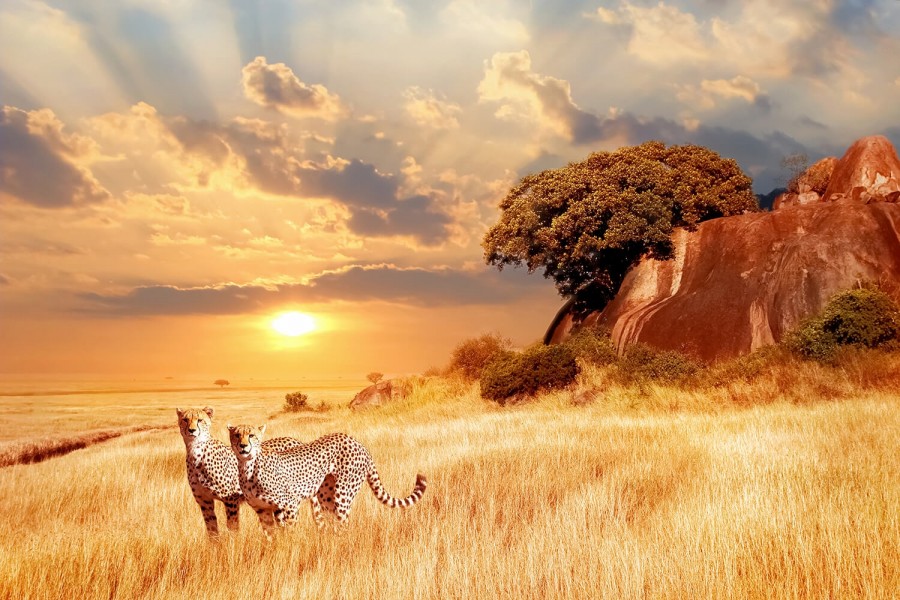
Fast facts
Size: stretches for up to 14,750 km2 square miles.
Location: North Tanzania
Scenery / Features: forestry, grassland, savanna and woodland
Wildlife Includes: African, elephants, leopards, buffalo, lions, rhinoceros, impala, hyena, gazelles, ostriches and vultures. In fact, there are over 500 different species of bird in the Serengeti alone, a
park which is commonly known for its big cats and wilde beast!
The Serengeti National park is said to be Tanzania’s oldest National park, covering approximately 5,700 sq mi. It is famously known for the massive numbers of Wildebeests and Zebra it welcomes. You will also find abundant Nile crocodiles and honey badgers along with many other animals.
The history which lies in its name is phenomenal and quite interesting; Serengeti comes from the word “siringet” a name given by the Masai, which means “the place which runs forever” The Serengeti national park is said to have three segments,
- The southern part: also referred to as the Serengeti plains where trees are scarce, this is where the name originates from, this area remains the most symbolic part of the park, this the part of the park where the
wildebeest breed, and during the rainy season you’ll find other animals like zebra, gazelle, impala, hartebeest, topi, buffalo, waterbuck in huge
numbers. - Western corridor: on this part of the park you’ll get to see the Nile crocodiles, the patas monkeys, hippopotamus and the martial eagles, habituated by the Grumeti River and its gallery forest.
- Northern Serengeti : this area is mostly an open woodland, here is where you get to see the migratory wildebeest and Zebras, you’ll also get to see the elephants, giraffes and dik dik-
The Serengeti national park is also famous for its affluence of wildlife and the biodiversity. The popular animals you’ll get to see are the big five,
which include: Lions (of which serengeti holds the largest population in Africa), African leopard, African bush, elephant, eastern black rhinoceros, African buffalos.
Other animals that you’ll come across include the cheetah, gazelle, spotted hyena, jackals, African golden wolf, mongooses, otters and the recently
reintroduced East African wild dog. Apart from the safari staples, primates such as yellow and olive baboons and vervet monkey, patas monkey, black-
and-white colobus are also seen in the gallery forests of the Grumeti River.
Tentative itinerary
Route: 1 Lake Manyara/ Tarangire National Park – 2 Serengeti National Park—2 Ngorongoro
Packages:5 Nights / 6 Days
Day 1: Arrive at Arusha/Kilimanjaro airport. After meet and assist, proceed to Lake Manyara/ Tarangire
National Park for a game drive with packed lunch.
17:00 Exit the park and proceed to Lake Manyara for dinnerand overnight at the lodge.
Day 2 : After breakfast at the lodge, check out and proceed to Serengeti National Park with packed lunch. Game drive en-route to the lodge. Dinner and overnight at the lodge
Day 3 : After breakfast at the lodge, full day game drive with packed lunch or hot lunch at the lodge/tented camp.
Day 4 : After breakfast, check out and proceed to Ngorongoro/Karatu. Arrive in time for hot buffet lunch at the lodge. Afternoon at leisure. Dinner and
overnight at your preferred lodge.
Day 5 : After breakfast, proceed for a full day crater tour with packed lunch.
Dinner and overnight at the lodge
Day 6 : After breakfast, check out and proceed to Arusha/ Kilimanjaro for your flight back home.
Lake Eyasi
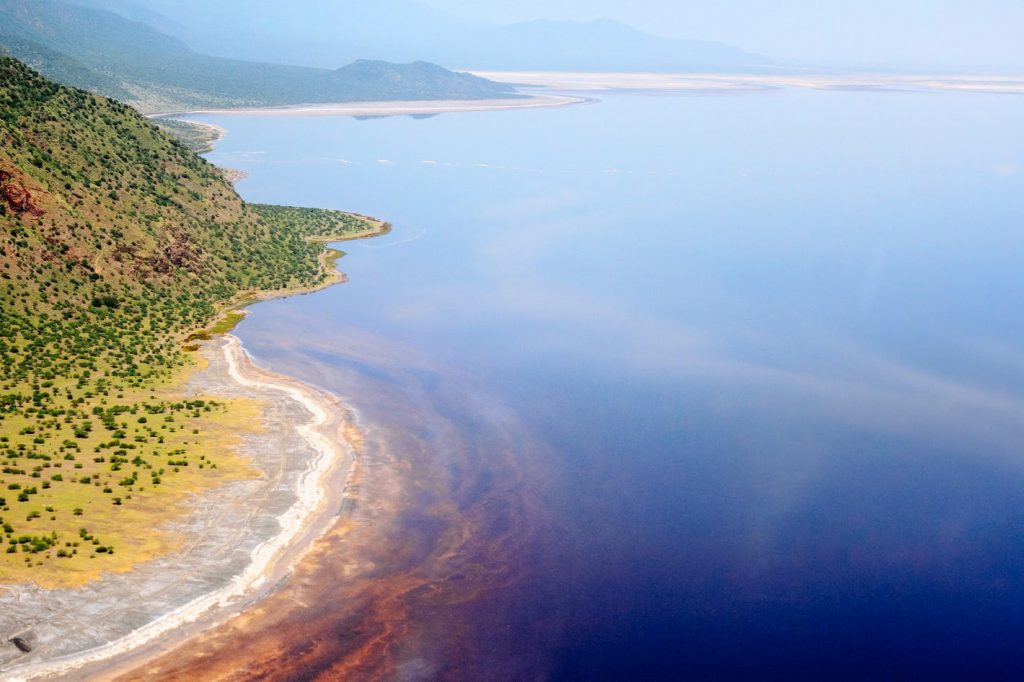
Lake Eyasi is a seasonal shallow endorheic Salt Lake on the floor of the Great Rift Valley at the base of the Serengeti Plateau, just south of the Serengeti National Park and immediately southwest of the Ngorongoro Crater in the Crater Highlands of Tanzania.
Fast facts
Size: 1,050 km2
Location: Southwestern end of the Ngorongoro
Conservation Area
Attractions: hunters and gatherers community, Caves, Mountains, Hadzabe busmen, Lake Eyasi
Animals in the area: flamingos, pelicans and many other bird species.
Things to do at Eyasi: Visit Hadzabe community, Hunting, honey gathering, experience a bushman trekking adventure and visit bushmen cave paintings
Best time to visit: June to October
Tentative itinerary – Day Trip
Depart from the lodge in Karatu/Ngorongoro and transfer to Lake Eyasi were you will spend the whole day interacting with the Hadzabe and Datoga tribe.
You can join them in hunting, gathering fruits, Blacksmith (local industry) visits, Bird watching around the natural spring, Nature walk to Lake Eyasi
including sunset and Hotspring.
Lake Natron
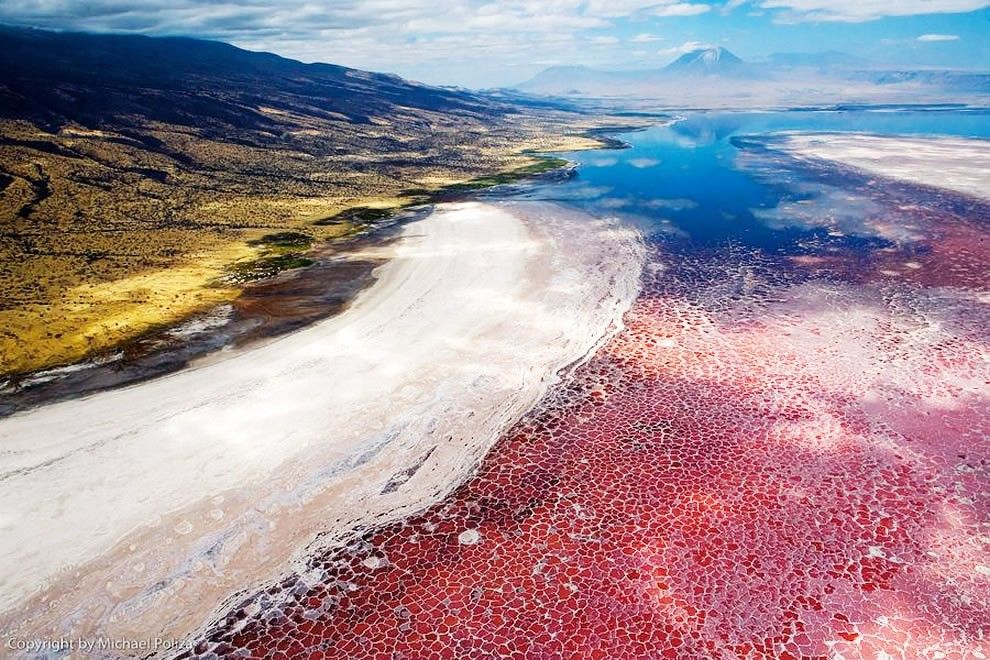
Fast facts
Size: less than three metres (9.8 ft) deep, and varies in width depending on its water level. The lake is a maximum of 57 km2 long and 22 kilometres (14 mi)wide)
Location: Northern Tanzania, Arusha
Scenery / Features: Salty lake
Wildlife Includes: endemic algae, invertebrates, birds, fish and flamingoes
Best time to visit: July to October
Lake Natron is salty lake located in the Arusha Region. The lake is fed by the Southern Ewaso Ng’iro River, which rises in central Kenya, and by mineral-
rich hot springs.
Temperatures at the lake are usually above 40 °C. Due to the high levels of evaporation sodium carbonate decahydrate and sodium sesqui – carbonate dihydrate is left behind. This is the reason the lake concentrates on Cautic alkaline brine with a pH of greater than 12.
In the less salty water around the margins of Lake Natron, homes (some endemic algae, :invertebrates, birds and some fish. It also is the only regular breeding area in East Africa for the flamingoes
Oldonyo Lengai
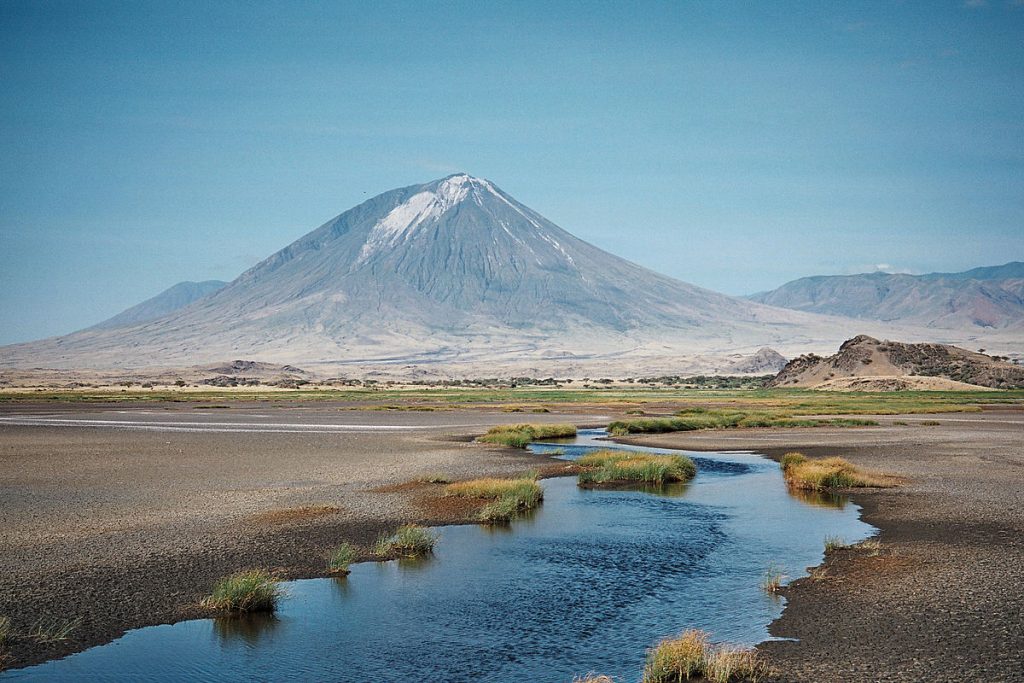
Fast facts
Size: 1,040 km2
Location: Northern Tanzania, Arusha
Scenery/ Features: Soda Lake with Flamingo, Ol Doinyo Lengai,
Wildlife Includes: baboon bark, lesser kudu and oryx, Baboon, Lizard, Hyenas, Lion, Leopard, Impala and Zebras, Flamingo
Best time to visit: July to October
Ol Doinyo Lengai, “Mountain of God” in the Maasai language, is an active volcano located in the Gregory Rift, south of Lake Natron within the Arusha Region of Tanzania, Africa. Part of the volcanic system of the East African Rift, it uniquely produces natro carbonatite lava.
Ngorongoro Crater

Fast facts
Size: 8,292 km2
Location: Northern Tanzania
Scenery / Features: Masai Local Communities
Wildlife Includes: Zebras, Wildebeests, commonelands, Hippos, Thomson’s Gazelles, Water bucks, lions Hyenas, Elephants, warthog, buffalo and impala. Endangered black rhino and black-maned male lions.
Best time to visit: July to October
Ngorongoro is described by some as the 8th wonder of the world, enough to make it one of the most famous sites in Africa. Ngorongoro is also said to
have highest density of wildlife.
The name Ngorongoro comes from the large volcanic caldera (Ngorongoro crater), the Masai had previously named it after the sound produced by the
cowbell (Ngorongoro). The crater has a radius of 265 square kilometers, and its sides up to 600 meters deep, making it the largest volcanic caldera in the world.
The crater floor has a number of habitats from the grasslands, to swamps to forests and of course the lake Makat. Lake Makat is a central soda lake hich is supplied by the Munge river is a source of water for several animal’s fund here.
Here at Ngorongoro you’ll get to see the thriving population of the endangered Black rhino, you may also come across leopards and fabulous black-maned lions. You will also find flamingos around the lake Makat.
You will get to see the bomas, the temporary huts built by the Maasai, and you will get to explore the amazing architecture and their rich history.
Tarangire National park
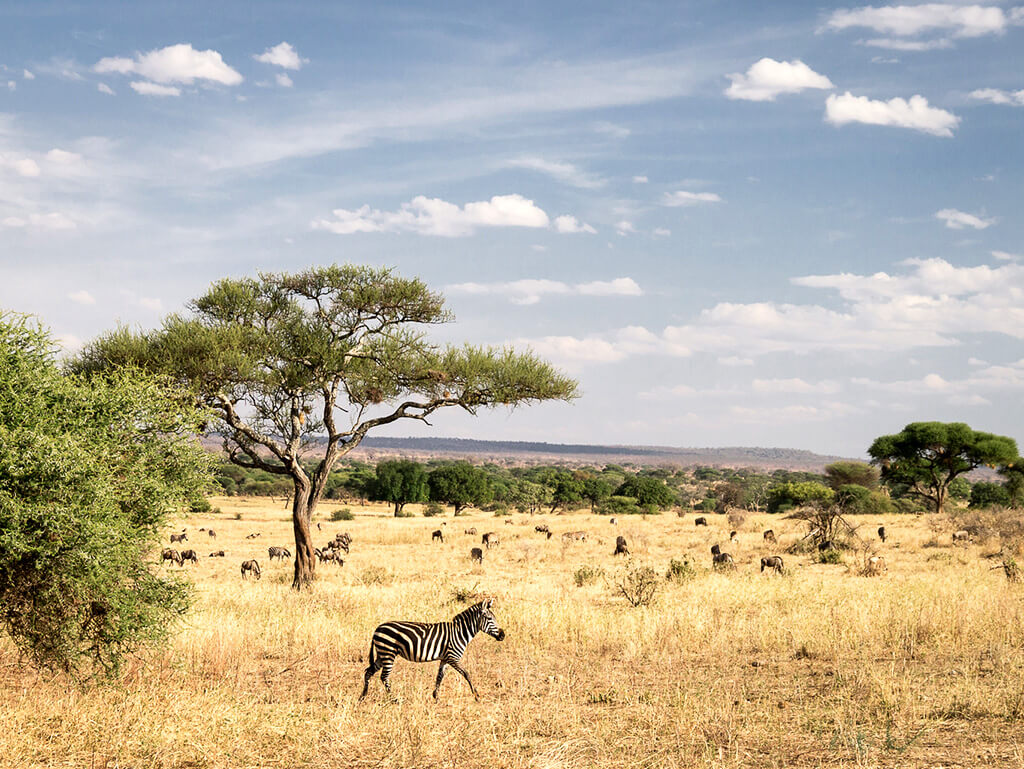
Fast facts
Size: 2,850 km2
Location: Northern Tanzania
Scenery / Features:
Wildlife Includes: yellow-collared lovebirds, Koribustard, Ostrich, and hornbills. Dwarf mongooses, leopards, cheetahs, various primates, ostriches, flamingoes, elephants, rhinos, giraffes, zebras, gazelles, buffaloes, wildebeests, pythons, hartebeests, elands, and impalas.
Best time to visit: June to October
On your way to Ngorongoro and Serengeti, you’ll come across this beautiful place, the Tarangire national park. It is 6th largest national park in Tanzania, it’s named after the Tarangire river that cruises across the park, and its size is approximately 1,100 square miles. During the dry seasons the
Elephants are present in large numbers up to 300 of them, you might spot them scraping the dry river bed in search for an underground stream. While thetransient wildebeest, zebra, buffalo, impala, gazelle, hartebeest and eland accumulate around the shrinking ponds. Here at Tarangire national park you get to see the greatest concentration of wildlife (apart from the Serengeti), and a breathtaking view of the maasai plain and the mountains in the south.
Tarangire is another favorite location for bird- lovers; because it is has the most breeding species in one habitat in the whole world. You’ll come across the Kori bustard, the bulkiest flying bird, the world’s largest bird-the ostrich, the howling colony of dashing colorful, yellow collared lovebird, and many others.
Another fabulous site you’ll get to see here is that not only the pythons but the lions and leopards also climb trees!
Apart from all of this you can make a day trip to the Masai and Barabaig villages and have a look at hundreds of ancient rock paintings in Kolo.
Tentative itinerary
08:00 – Pick up from hotel located within Arusha Town and proceed to Tarangire National Park with packed lunch fora full day game drive.
Lake Manyara National Park
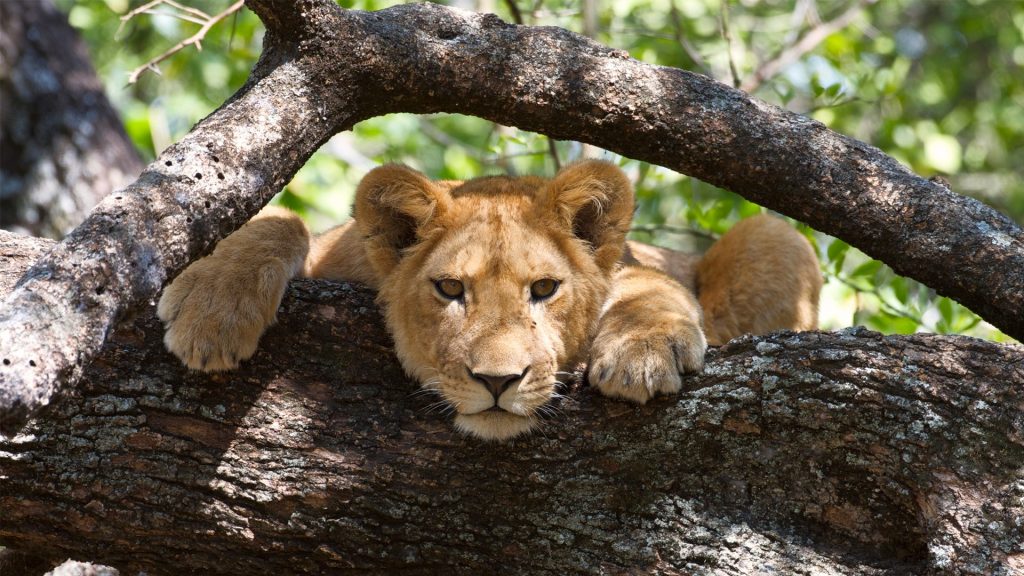
Fast facts
Size: about 325km2, of which upto 19..42 km2 is the lake
Location: Northern Tanzania
Scenery / Features: Maji Moto are hot springs located within the park
Wildlife Includes: tree climbing lions, elephant herds and huge numbers of baboons and over 400 species of bird including pink flamingos
Best time to visit: July to October
Lake Manyara national park is located in northern Tanzania it is size is about 127 sq miles, of which up to 77 sq miles is the lake itself. It goes without saying that it has a wonderful scenery, its groundwater forests, bush plains, baobab strewn cliffs, and algae-streaked hot springs all of this makes up an incredible ecological mash-up. The lake Manyara is onsidered home to incredible variety of birds, like the pink flamingo, the yellow billed storks swoop and corkscrew and herons.
Lake Manyara is famous for its tree-climbing lions, who can be somehow difficult to spot. Lake Manyara national park is also known for having the largest concentration of baboons compared to anywhere in the world. That would speak for itself as you will see the baboons in large numbers longside the road. You’ll also see the playful blue monkeys running swiftly between the mahogany trees. You’ll get to see the large buffalos, wildebeests, zebras, giraffes as they accumulate on these grassy plains next to the alkaline lake.
Incase you’ll be looking for Manyara’s legendary tree-climbing lions and impressively tusked elephants, you’ll find them on a narrow belt of acacia woodland inland of the floodplain.
Manyara is home to more than 400 species of birds, on average you might expect to have a look at 100 of these in one day!
Tentative itinerary
08:00 – Pick up from hotel located within Arusha Town and proceed to Manyara National Park with packed lunch fora full day game drive.
